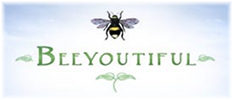Douz to Sousse… a visit with Luke Skywalkers aunt.
December 2, 2008 in Africa, Travelogue, Tunisia
< ![CDATA[ The campground in Douz is excellent. We were a bit worried about it, actually. Hence the trek down there to scope it out in advance of the arrival of the intrepid grandparents and the beginning of the Festival of the Sahara, which will, doubtless, limit the lodging options. It was dark when we rolled into town and it took some driving around in circles and the help of a couple of grill attendants to locate the hand painted “camping” sign at the back of a one lane road behind the souq. Should you ever find yourself in backwater Tunisia, be assured of flushing toilets (the western style) hot and cold running water and even a little cafe serving beer and wine, a novelty in a muslim country. All of this and cheerful service were found at Camping Desert Club Douz. We set up our monstrous tent under the amused eye of the attendant, “That thing is as big as a bedouin tent!” he quipped... fortunately, we have more kids than camels... and we tucked in for the cold desert night. The town of Douz is charming in all of the ways one would hope: veiled bedouin maidens in colorful wraps, stern faced men in flat red caps, camel heads hanging in the door of the butcher shop, shepherds, sheep and all, crowding the narrow streets... it is perfect... exactly what we came to Africa for. It is the one dot on my map that I’ve been salivating over for about a year and a half. We are keen to return next month for the big festival and the bedouin event of the year. The drive back to Sousse was easier than the drive down. I seem to have settled into the Tunisian driving groove over night and found that driving in North Africa is not all that different from driving on Wolfe Island, where I grew up, in Canada. One simply drives right down the center line until on coming traffic forces fidelity to the right side of the road keeping one eye cocked for camels and sheep, instead of cows. The similarities all came together for me while we sat for five minutes in the middle of a lonely stretch of highway between Douz and Matmata watching a shepherd hoot and holler and wave his stick to get a couple hundred sheep and goats across the road in front of us. “Ya know, this is just like home,” I mused aloud. “When Kay’s cows are out we have to sit and wait for them when we are running for the ferry... everyone leaves an extra five minutes just in case... here it’s sheep and goats... and camels.” After that, the driving didn’t bother me a bit. I just pretended that the animals were island cows and the erratic drivers were the Johnson boys and it came quite naturally. The scenery along the edge of the Grand Erg Oriental is beyond description. The colors in the sandstone range from greys and greens to crimson and coral. The landscape is sun scorched and windswept, and stark in every direction. And yet, upon closer study one sees bedouin yurts and tents dotting the horizon, with camels tied up out front. Where the tents and yurts fail there are cave dwellings, little holes in the rock that are almost impossible to see until you are right up on them, some painted white around the door. These are the troglodyte dwellings, underground cave homes that have been inhabited in this part of the world for millennia. They are cool in the hot, warm in the cold and don’t get blown away in a sand storm. They’re easy to hide and easy to defend, which was important, once upon a time in the desert. Matmata is the place most known for these troglodyte dwellings, and as we got closer and closer we saw more and more. We pulled over at one set where there was tea room for tourists and what looked like a troglodyte hotel under construction. The coffee and tea were what you’d expect... tasting slightly of camel and over priced. The hotel was fascinating to explore (no rules keeping us off the construction site here, in fact, the workers invited us right in!) The kids poked through the cave like rooms and we watched the men digging out the rooms from the soft stone. We’d just about loaded the clowns back into the car when a lady emerged from a cave doorway nearby with her brown little son, wrapped in a winter jacket, and started enthusiastically inviting us in for tea. Of course, we were wary. “We’ll be back in a month and we’ll come for tea then.” I told her. She would hear none of it. We must come in NOW for tea and see all of the things she had to show us. I was sure we were about to get shafted out of twenty dinar for SOMETHING, but we had no choice except to follow her underground. It turns out that the mother of Muhammed Ali (the boy’s name... I forgot to ask the mother’s) restored my faith in humanity. After many months on the road and many disingenuous offers of help or hospitality, I was not only wary, but jaded. Surely there was a catch. No catch. Mama, wearing a floor length, long sleeved, blue velour ‘addidas’ robe graciously hosted us in what turned out to be her actual family home. She showed us the underground room where the olives are milled and then pressed and the two separate mills... the small one for the donkey to turn, the large one for the camel to turn. She took us through her weaving room, her living room, her bedroom and waved up at us through the hole in the roof where we had climbed the hill to take a picture down into the house. She pointed at the “upstairs” rooms, reached by climbing a knotted rope and using well worn hollows in the wall for footholds, “the baby is sleeping up there,” she said, putting her finger to her lips. She baked us our first bedouin flat bread and served it with her own olive oil and honey... and of course, tea. Green tea with rosemary this time... still with a hint of camel. Then she showed us the hand mill for “flour if you crank to the right, couscous if you crank to the left” (although she buys most of her flour now) and invited Hannah to try. Not the boys. Boys don’t grind flour. It was a perfectly delightful hour, and she asked for nothing in return. Of course we paid her a little anyway, for the tea and the bread, at least. We’ll take Grammy and Gramps back, while they are here, and visit her again. The more I thought about Muhammed’s Mama the more I liked her. Here is a lady who has figured out how to live within the cultural expectations and still make a little money on the side. She’s educating the few people who find her and raising her family’s standard of living exponentially. In a country where the average man makes $3000 usd a year, serving tea to strangers for a few dinar a day can make a big difference. If I had the luck to live in a troglodyte dwelling, I’d do the same thing. As we drove off the kids were talking about the house, “Dad, is that the kind of house they used to film the Star Wars movies?” “Yep! In fact, they were filmed right here.” “That lady looked a lot like she could be Luke Skywalker’s aunt,” said Ezra, solemnly. “If the houses are for real, do you think the pod racing was for real too?” They peered off between the hills, looking for signs of Sebulba coming around the bend. Soon Elisha and Ez were pretending to pod race the car as we curved and dipped through the sandy mountain passes. “You know Mom,” said Elisha, “I think maybe they did get the idea for Jarjar Binks from that creature with the long ears that teaches you not to litter.” Maybe so. In every park and school yard sands a tall, skinny creature with long pointy ears and a fox like face that is sort of the “Smokey the Bear” of litter in Tunisia. For three boys under ten, there is no place cooler than to be on the REAL desert planet from Star Wars... even camels can’t compete with that.]]>
 RSS - Posts
RSS - Posts

























